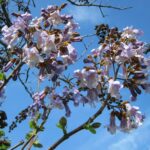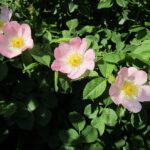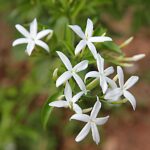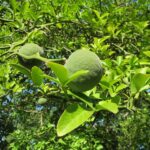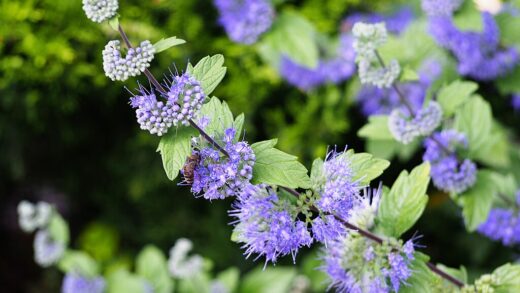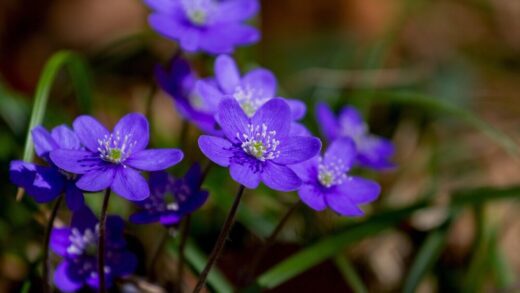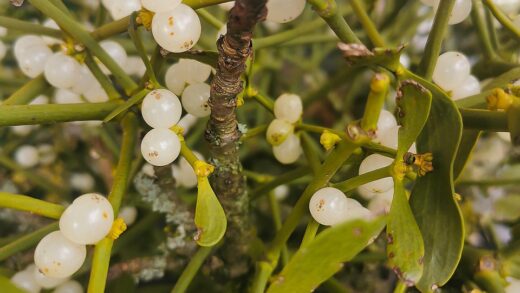The topic of pruning and cutting back the wood anemone is unique in that the most expert advice is, for the most part, to refrain from doing it at all. Unlike many garden perennials that benefit from deadheading, shaping, or a hard cutback, the wood anemone’s life cycle dictates a hands-off approach. This plant has a very specific and efficient method of growth and senescence, and interfering with this natural process can be detrimental to its health and long-term survival. Understanding why we should not prune this plant is just as important as knowing how to prune others. The key to its care lies in appreciating its ephemeral nature and allowing it to complete its annual cycle without unnecessary intervention.
The primary reason for not cutting back the wood anemone lies in the critical role its foliage plays after the flowering period has ended. The charming, deeply incised leaves are not merely decorative; they are the plant’s solar panels. Following the fading of the flowers in late spring, the leaves continue to work diligently, capturing sunlight and converting it into energy through photosynthesis. This energy is then transported down to the underground rhizome, where it is stored as starch. These stored reserves are the sole source of fuel for the plant’s survival through its long dormancy and for the production of the next year’s leaves and flowers.
Cutting back the foliage prematurely, even after the flowers have gone, is akin to taking the batteries out of a device before it has finished charging. This action severs the energy supply line to the rhizome, leaving it under-resourced for the coming year. A plant that has been cut back too early will almost certainly be weaker in the following season, producing fewer flowers and less vigorous growth. If this is done repeatedly, the rhizome will eventually become exhausted and the plant will perish. It is absolutely essential to allow the leaves to yellow, wither, and die back completely on their own schedule.
The only instance where any form of cutting might be considered is for sanitation purposes. If you were to find a plant infected with a disease like anemone smut, which is characterized by distorted leaves and black, sooty spores, then the entire infected plant should be carefully cut out at the base, or more preferably, dug up and completely removed. This is not pruning for aesthetic or horticultural reasons, but a necessary measure to prevent the spread of a serious disease to the rest of the colony.
The importance of post-flowering foliage
The period immediately following the cessation of flowering is arguably the most crucial phase for the wood anemone’s future health. While the floral display may be over, the plant’s work is far from finished. The leaves take center stage, entering their most important period of photosynthetic activity. It is during these few weeks in late spring and early summer that they work tirelessly to produce the carbohydrates that will be stored in the rhizome. This process of energy storage is what determines the success of the plant in the subsequent year.
More articles on this topic
Many gardeners possess a natural inclination towards tidiness, and the sight of fading or yellowing foliage can trigger an urge to “clean up” the plant. However, in the case of the wood anemone and many other spring-ephemeral bulbs and perennials, this instinct must be resisted. The yellowing of the leaves is not a sign of sickness or distress; it is the visible manifestation of the plant’s natural process of senescence. As the leaves begin to yellow, the chlorophyll is breaking down, and all the valuable mobile nutrients and energy are being systematically withdrawn from the foliage and translocated to the storage organ below ground.
This natural decline must be allowed to run its full course. The leaves should only be considered ready for removal, if at all, when they are completely brown and dry and detach from the plant with a gentle tug. By this point, the transfer of resources is complete, and the plant has officially entered its dormant state. Raking away these dried-up leaves is generally harmless, although leaving them to decompose in place can contribute a small amount of organic matter back to the soil, mimicking the natural cycle of the woodland floor.
Patience is the watchword for the gardener during this phase. The best strategy is to have other, later-emerging plants situated nearby. As the anemone foliage begins to look untidy, the unfurling leaves of hostas, ferns, or other shade-loving perennials can grow up and around them, effectively hiding the declining leaves from view. This companion planting strategy allows the anemone to complete its life cycle undisturbed while maintaining a visually appealing garden bed.
Deadheading: to do or not to do?
Deadheading, the practice of removing spent flowers, is a common horticultural technique used to encourage reblooming, direct energy into root and leaf growth, and improve a plant’s appearance. However, when it comes to the wood anemone, deadheading is generally unnecessary and offers little to no benefit. The wood anemone is a classic spring ephemeral that has a single, defined flowering period. It will not be stimulated to produce a second flush of flowers if the old ones are removed. Its bloom time is genetically and environmentally determined and once it is over, it is over for the year.
More articles on this topic
Furthermore, from an energy-conservation perspective, the argument for deadheading is weak. The process of producing seed does consume some of the plant’s energy, but for a plant like the wood anemone, this is a natural part of its reproductive strategy. In a garden setting where the plant primarily spreads via its rhizomes, preventing seed formation is not a primary concern for strengthening the main clump. The energy expenditure on seed production is relatively minor compared to the total amount of energy being generated by the leaves.
There is also an aesthetic and ecological argument against deadheading. The spent flower heads are not particularly unsightly, and they fade away quite discreetly. In a naturalistic woodland garden, allowing the plants to go to seed contributes to the overall wild and untamed aesthetic. Moreover, the seeds can be a food source for certain insects, and allowing them to mature and disperse can, over a very long period, lead to the establishment of new satellite colonies in other parts of the garden, which can be a delightful surprise.
Therefore, the effort involved in painstakingly deadheading the small, numerous flowers of a patch of wood anemones is not rewarded with any significant horticultural advantage. It is a task that can be safely and confidently skipped. The best course of action is simply to enjoy the flowers while they last and then allow the plant to proceed with its natural cycle of seed production and foliar dieback without interference.
Managing the spread
The wood anemone spreads slowly but surely via its underground rhizomes, gradually forming a beautiful, dense carpet. This natural tendency to spread is usually a desired trait, as it contributes to a lush, naturalistic look in a shade garden. For this reason, pruning or cutting back is not typically used as a method to control its spread. The plant’s expansion is not aggressive or invasive, and it rarely overwhelms its neighbors. It coexists peacefully with other shade-loving plants, its growth habit being one of weaving amongst them rather than smothering them.
If, for some reason, a clump of wood anemones has spread beyond its intended boundaries, the most effective way to manage it is not by cutting back the top growth, but by lifting and dividing the rhizomes. This should be done during the plant’s summer dormancy period when the foliage has completely died back. Using a spade or garden fork, you can carefully lift the section of the colony that has encroached into an unwanted area. The rhizomes can then be replanted in a new location or shared with other gardeners.
This method of control by division is far superior to any attempt at control through pruning. Cutting the foliage will, as has been established, only weaken the plant and will not stop the rhizome from continuing to grow underground. In fact, a weakened plant may respond by putting more energy into vegetative spread in a bid for survival. By physically removing the rhizomes from the area where they are not wanted, you are directly addressing the source of the spread in a way that is both effective and does not harm the overall health of the main colony.
In most garden designs, however, this level of control is rarely necessary. The beauty of the wood anemone lies in its ability to naturalize and create a seamless carpet of spring color. The best approach is to give it adequate space at the time of planting and then simply allow it to find its own way, appreciating the gentle and elegant manner in which it colonizes its chosen home.
The exception: disease control
The single, most important exception to the “no pruning” rule for wood anemones is in the case of disease management. While generally healthy, these plants can be susceptible to a specific fungal disease called anemone smut (Urocystis anemones). If you identify a plant that is showing the classic symptoms of this disease – thickened, distorted leaves and stems with dark, lead-coloured streaks that rupture to release black spores – you must take immediate action. In this scenario, cutting is not just recommended; it is essential to protect the rest of your plants.
The first step is to carefully remove all the affected top growth of the infected plant. Use a sharp, clean pair of scissors or pruners and cut the stems right at the soil level. It is important to do this with minimal disturbance to avoid spreading the fungal spores. It can be helpful to place a plastic bag over the infected parts before you cut them to contain the spores. This removed material must not be composted; it should be burned or sealed in a bag and disposed of in the rubbish.
However, for a systemic disease like anemone smut, simply removing the top growth is not enough. The fungus resides within the entire plant, including the rhizome. Therefore, the most effective and responsible course of action is to carefully dig up the entire infected plant, including its rhizome system and the soil immediately surrounding it. This entire clump should be disposed of in the same way as the cut foliage. This may seem drastic, but it is the only way to ensure the disease is eradicated from that spot and to prevent it from spreading to healthy, neighboring plants.
After handling diseased plant material, it is absolutely critical to thoroughly sanitize your tools. Clean any soil off your pruners and trowel, and then wipe them down with a disinfectant such as rubbing alcohol or a bleach solution. This prevents the accidental transfer of the disease to other areas of your garden. This sanitation protocol is the only time cutting back a wood anemone is a necessary and beneficial practice.










